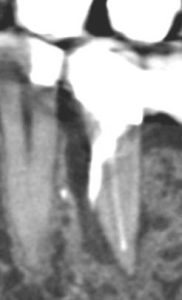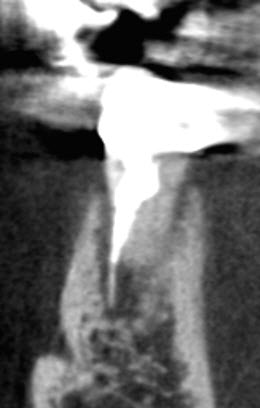Endodontics
The practice of endodontics is concerned primarily with the removal of diseased dental pulp and its replacement with filling material, an operation known as root canal therapy. After the pulp is removed, the tooth continues to be nourished by connecting blood vessels in the jaw. The tooth is then considered to be dead, although the fibres that hold the teeth in the jawbone are alive.

Microscopic Endodontics
At Endodontic Specialists we take every reasonable step to remain at the forefront of our profession.
Among other advanced techniques and instruments utilized by our group, surgical loupes with fibre optic illumination, and the surgical operating microscope have opened up entirely new vistas for the treatment of both non-surgical and surgical endodontics. Due to the enhanced illumination and high magnification optics, calcified canals can be optimally located. Additionally, retreatment of endodontic cases that have failed due to separated instruments, separated posts, and repair of perforations can now be managed with greater efficiency and success. These cases, in the past, could be managed only by surgical approaches that had a lower success rate.
In those cases in which surgical endodontics is the treatment of choice, the increased magnification and illumination provided allows for enhanced visualization of the surgical field. This, in turn, allows for more efficient surgical technique and greater ability to achieve success in surgical endodontics.

To understand endodontic surgery, it helps first to know something about the nonsurgical endodontic procedure, or “root canal.” A root canal is necessary when the soft inner tissue, or “pulp” of the tooth becomes inflamed or infected. This may happen as a result of deep decay, repeated dental procedures on the tooth, or a blow to the tooth. Endodontic treatment removes the damaged pulp. Then the tooth’s canals are cleaned and filled to help preserve the tooth.
In a few cases, however, nonsurgical endodontic treatment alone cannot save the tooth. In such a case, your dentist or endodontist may recommend surgery.
The most common endodontic surgical procedure is called an apicoectomy or root-end resection. When inflammation or infection persists in the bony area around the end of your tooth after endodontic treatment, your endodontist may perform an apicoectomy. In this procedure, the endodontist opens the gum tissue near the tooth to expose the underlying bone, and the infected tissue is removed. The very end of the root is also removed, and a small filling may be placed to seal the root canal. Local anesthetics make the procedure comfortable, and most patients return to their normal activities the next day.

